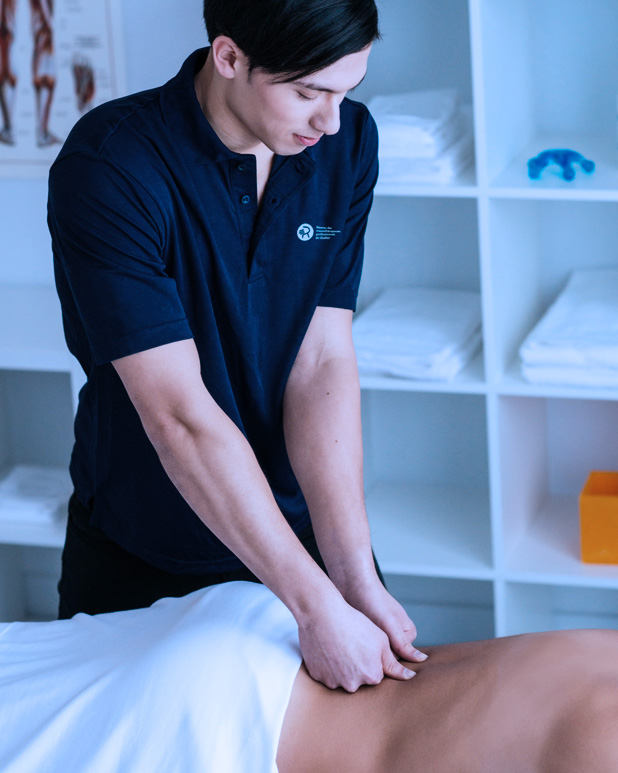Find a therapist
The Network of professional massage therapists of Quebec brings together more than 8,000 massage therapists
Member and insurer access
Find a therapist
The Network of professional massage therapists of Quebec brings together more than 8,000 massage therapists
According to Georgia Knap (1866-1946), there are 18 main points and 15 secondary points located symmetrically on the body where tensions can accumulate. The Knap technique aims at stimulating these muscle points to eliminate the pain encountered. By decreasing tension in these strategic areas of the body, the therapist also allows the whole body to relax, because all these points are interrelated.
Knap points are defined by three levels of sensation: active, passive and absent. A point will be considered active if tensions are felt without even putting pressure, while a passive point is considered painful only when pressure is applied. An absent point is simply an area without tension and without pain.
The Knap point’s technique can be integrated to a care and for a more global effect be complemented by other techniques such as reflexology. To regain vitality and health, Georgia Knap also suggested a change in diet and a healthy lifestyle, in addition to the massage of the points bearing his name.

In addition to reducing the effects of stress on the body, the main benefit of this technique is to eliminate any form of pain and muscle tension. Eliminating pain makes the body regain balance and better stamina. In addition to promoting good overall health, Knap points massage strengthens the body’s immune system by improving blood circulation. The technique is also known for the relief of torticollis, sinusitis, headaches, lower back pain and sciatic nerve pain.
To perform this technique, the 18 main points, identified from K1 to K18, must be massaged in their respective order. Using any kind of device such as a crystal, pestle, stick or his thumb, the therapist exerts pressure directly on the painful area with rotating motions (clockwise and counterclockwise) for about 30 seconds. The sensation can be uncomfortable and painful at the time, but a feeling of well-being is felt as soon as the pressure applied by the therapist is released and the targeted point is free of tension. In addition to pressuring Knap points, smoothing, modelage and kneading techniques can be used.
Although it is normal for this massage technique to be slightly painful, points where too much pain is felt should be avoided. For the same reason, it is contraindicated to receive a massage of Knap points in the case of muscle strain and muscle tear or rupture of ligaments or tendons. This care should also be avoided if the risk of hemorrhage or phlebitis is significant. If you feel very tired and sore after the care, get some rest and talk to your therapist at your next meeting.
Find a therapist